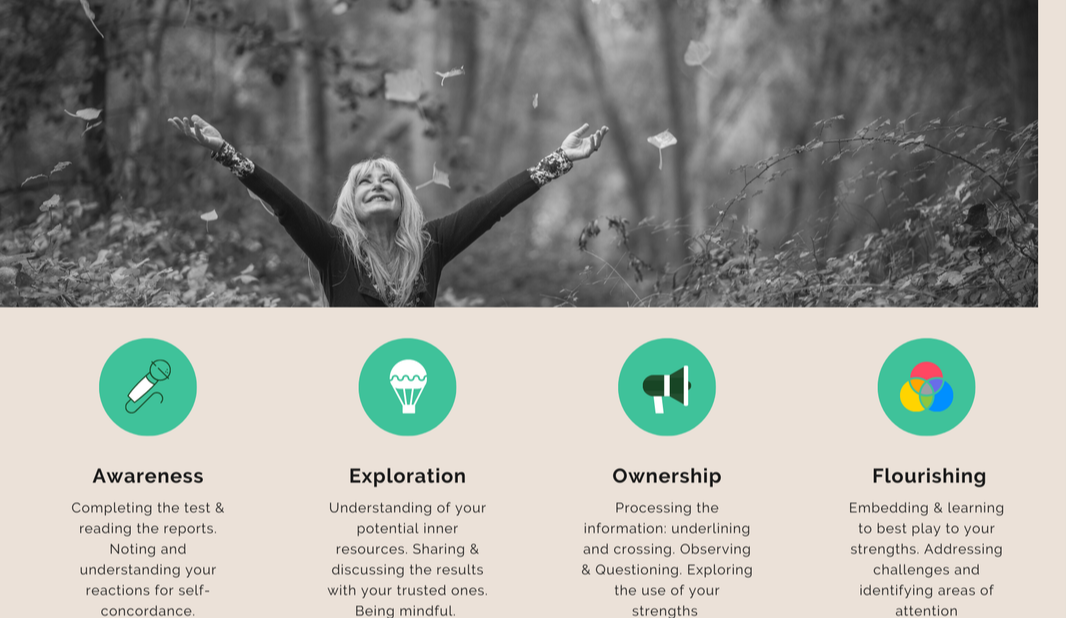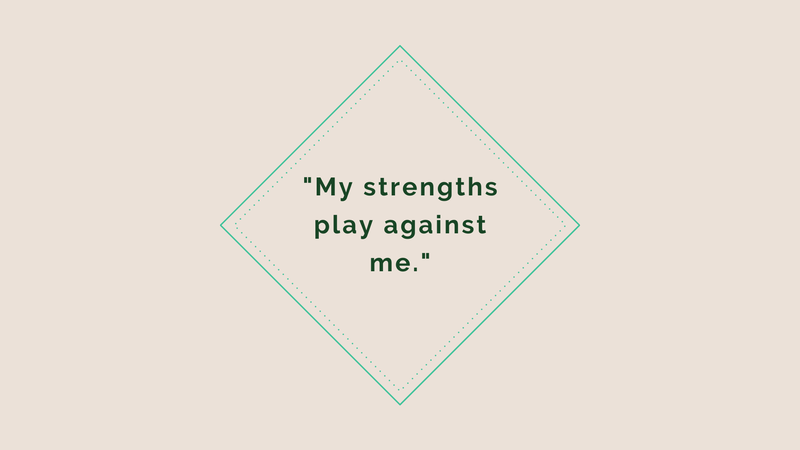Your Strengths Journey
You've taken the test, read the reports and we discussed your reactions to the results.
During our workshop, we've realised we all have our experience and background that we see the world through and strengths are another lens we see the world through. StrengthsFinder now gives us a common language we can use to share them and learn about ourselves.
Talent development offers infinite potential. It means we are constantly curious about who we are at our best. And it means we stay tuned-in to times we fail.
Where are you at on your inner journey? Has any new insights come up?
On this page you'll find guidance to continue your strengths journey.
During our workshop, we've realised we all have our experience and background that we see the world through and strengths are another lens we see the world through. StrengthsFinder now gives us a common language we can use to share them and learn about ourselves.
Talent development offers infinite potential. It means we are constantly curious about who we are at our best. And it means we stay tuned-in to times we fail.
Where are you at on your inner journey? Has any new insights come up?
On this page you'll find guidance to continue your strengths journey.
Explore your CliftonStrengths results: where to from here?
You create some space for your development, congrats! This is the most important thing. At the bottom of the page, there are resources to guide you on this journey. If you have limited time and you still want to nurture your inner journey, we invite you to name your "strengths story" and write it down with your own words.
Name your "talents story" in your own words
|
If you haven't started journalling, maybe this could be an opportunity for you. You've read your CliftonStrengths report, we've had the workshop and you may wonder: what's next? Here is a "simple" process to deepen the exploration your strengths:
Source: Gallup Time: as long as you like |
Play with your talent challenge e-cards
|
|
The first time you've read your reports, you may have encountered various reactions: you may have felt energised, understood & empowered. You may have experienced a sense of clarity and possibly self-confidence. You may also have noticed some resistance or disappointment while some of us may also possibly have felt stuck.
All these reactions are normal and documented by positive psychology practitioners. They are clues on our self-awareness journey. How are you doing now? Have you noticed any change? Now you've had a first flavour of your results, we've created e-cards to help you play to your strengths ♥️: they are designed to help you address your unique challenges and opportunities in relation to your talents. Click on the e-cards
|
|
Bring your talents to the next level: find your talents' optimal use!
Here are some lines of questioning to elicit insights, specific to strengths overuse and underuseIf you feel you may be in a situation of overusing or underusing your strengths, one of the best ways moving forward is to question your experiences using your strengths. The dynamics of strengths remains a new area of study. One model for looking at the dimensionality of strengths is to place each strength on a continuum in which too much of a strength in a particular context becomes overuse, too little is underuse, and the center area is the “strengths zone” or optimal expression (i.e., golden mean) of the strength. The golden mean of strengths refers to the expression of the right combination of strengths, to the right degree, and in the right situation. The reasons for such underuse or overuse are myriad and based on individual personality and contextual factors.
Source: VIA Time: 90 minutes |
Introduction to strengths-based development
|
Strengths-based leadership grew from the field of positive psychology. While Maslow (1954) appears to have been the first to use the term, Seligman brought it to prominence. President of the American Psychological Association in the early 1990s, Seligman began to study the change in focus of psychology over the previous 50 years, discovering that over 95% of research in that time had focused on the disease model.
Source: Gallup Time: 15 minutes |













